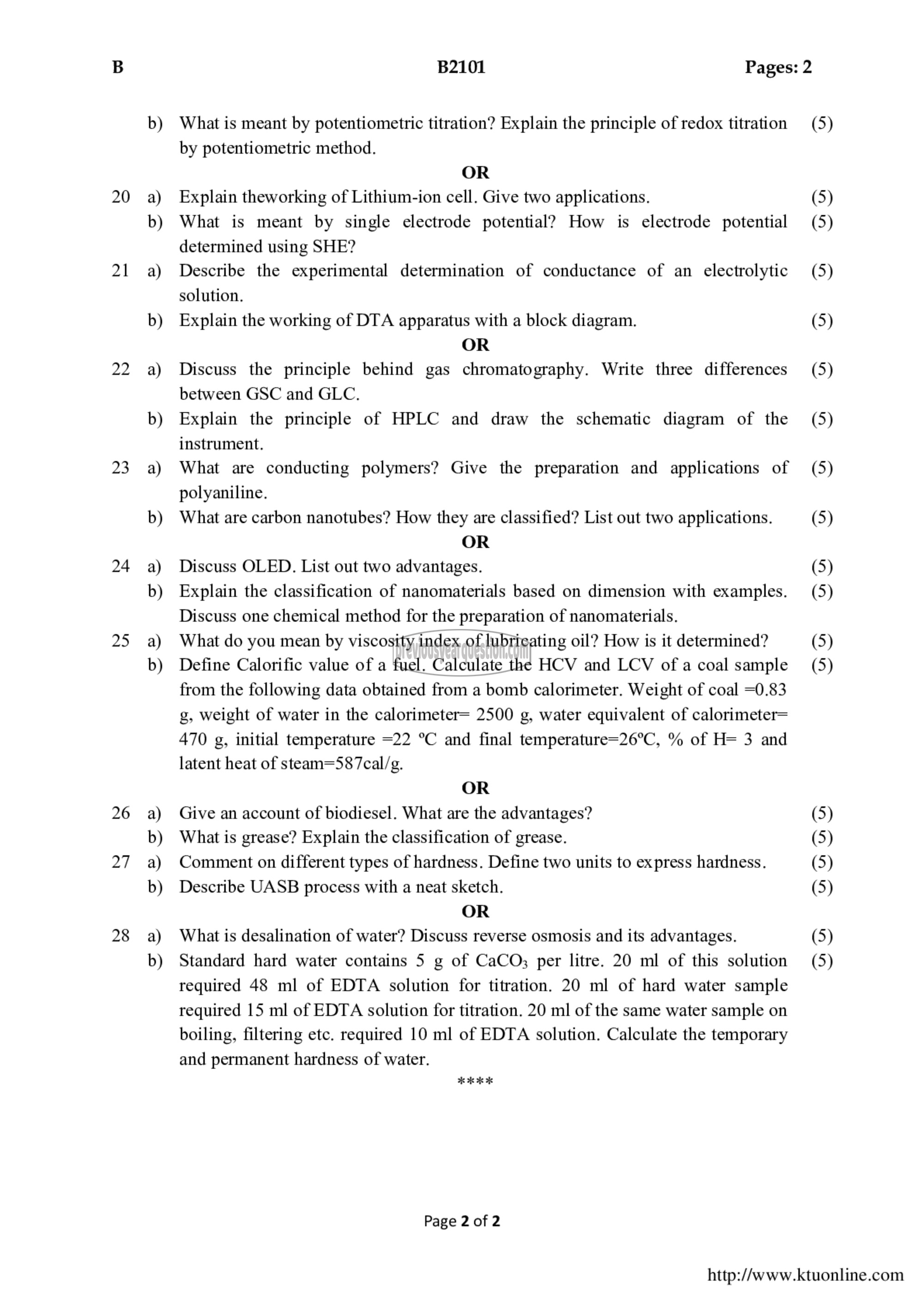APJ ABDUL KALAM TECHNOLOGICAL UNIVERSITY Previous Years Question Paper & Answer
Semester : S1 and S2
Subject : ENGINEERING CHEMISTRY
Year : 2018
Term : JULY
Branch : MECHANICAL ENGINEERING
Scheme : 2015 Full Time
Course Code : CY 100
Page:2
20
21
22
23
24
25
26
27
28
b)
a)
b)
a)
b)
a)
b)
8)
b)
B2101 Pages:
What is meant by potentiometric titration? Explain the principle of redox titration
by potentiometric method.
OR
Explain theworking of Lithium-ion cell. Give two applications.
What is meant by single electrode potential? How is electrode potential
determined using SHE?
Describe the experimental determination of conductance of an electrolytic
solution.
Explain the working of DTA apparatus with a block diagram.
OR
Discuss the principle behind gas chromatography. Write three differences
between GSC and GLC.
Explain the principle of HPLC and draw the schematic diagram of the
instrument.
What are conducting polymers? Give the preparation and applications of
polyaniline.
What are carbon nanotubes? How they are classified? List out two applications.
OR
Discuss OLED. List out two advantages.
Explain the classification of nanomaterials based on dimension with examples.
Discuss one chemical method for the preparation of nanomaterials.
What do you mean by viscosity index of lubricating oil? How is it determined?
Define Calorific value of a fuel. Calculate the HCV and LCV of a coal sample
from the following data obtained from a bomb calorimeter. Weight of coal =0.83
g, weight of water in the calorimeter= 2500 g, water equivalent of calorimeter=
470 g, initial temperature =22 °C and final temperature=26°C, % of H= 3 and
latent heat of steam=587cal/g.
OR
Give an account of biodiesel. What are the advantages?
What is grease? Explain the classification of grease.
Comment on different types of hardness. Define two units to express hardness.
Describe UASB process with a neat sketch.
OR
What is desalination of water? Discuss reverse osmosis and its advantages.
Standard hard water contains 5 g of CaCO; per litre. 20 ml of this solution
required 48 ml of EDTA solution for titration. 20 ml of hard water sample
required 15 ml of EDTA solution for titration. 20 ml of the same water sample on
boiling, filtering etc. required 10 ml of EDTA solution. Calculate the temporary
and permanent hardness of water.
بد ೫ ೫ ೫%
Page 2 of 2
http://www.ktuonline.com
(5)
(5)
(5)
(5)
(5)
(5)
(5)
(5)
(5)
(5)
(5)
(5)
(5)
(5)
(5)
(5)
(5)
(5)
(5)
